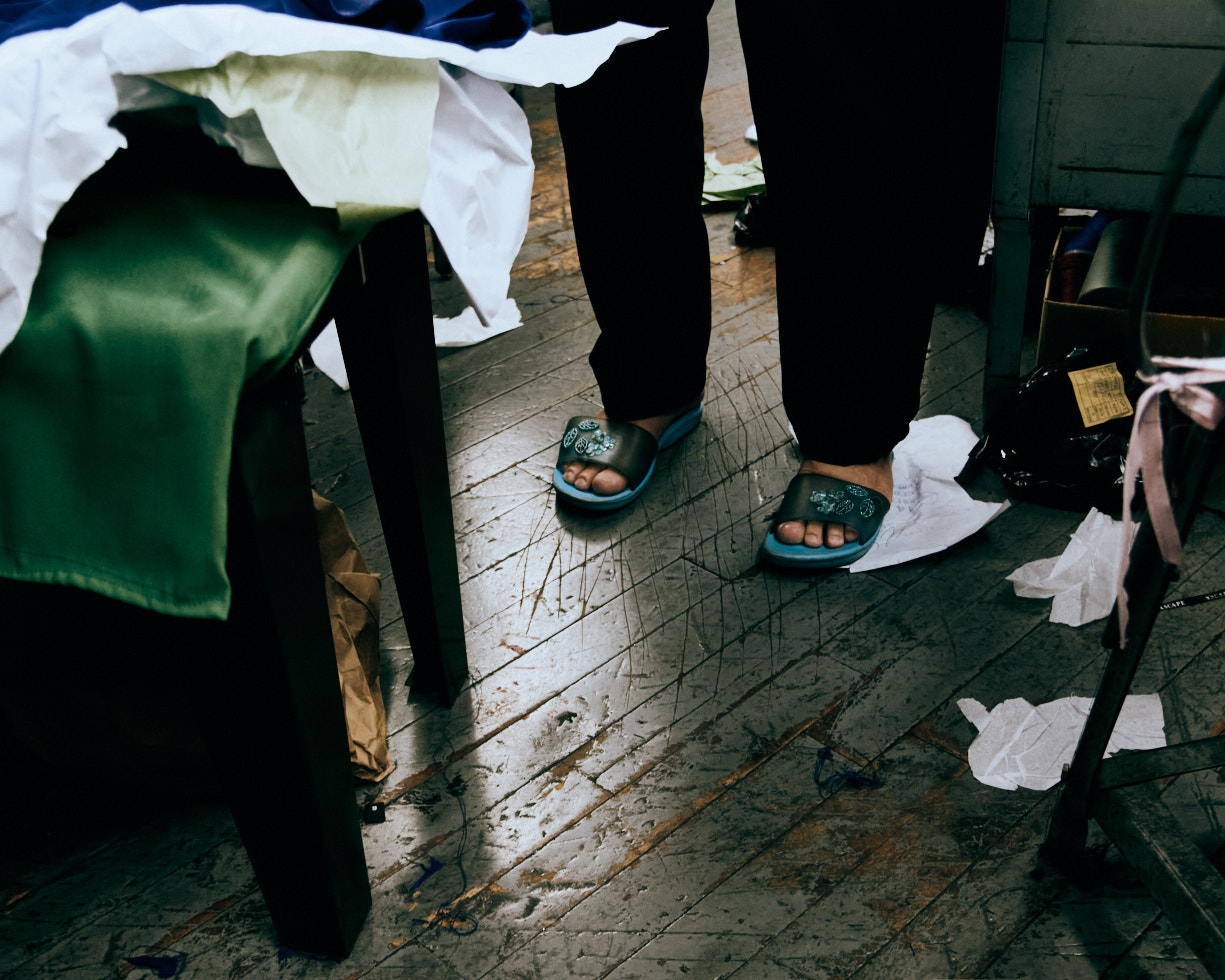


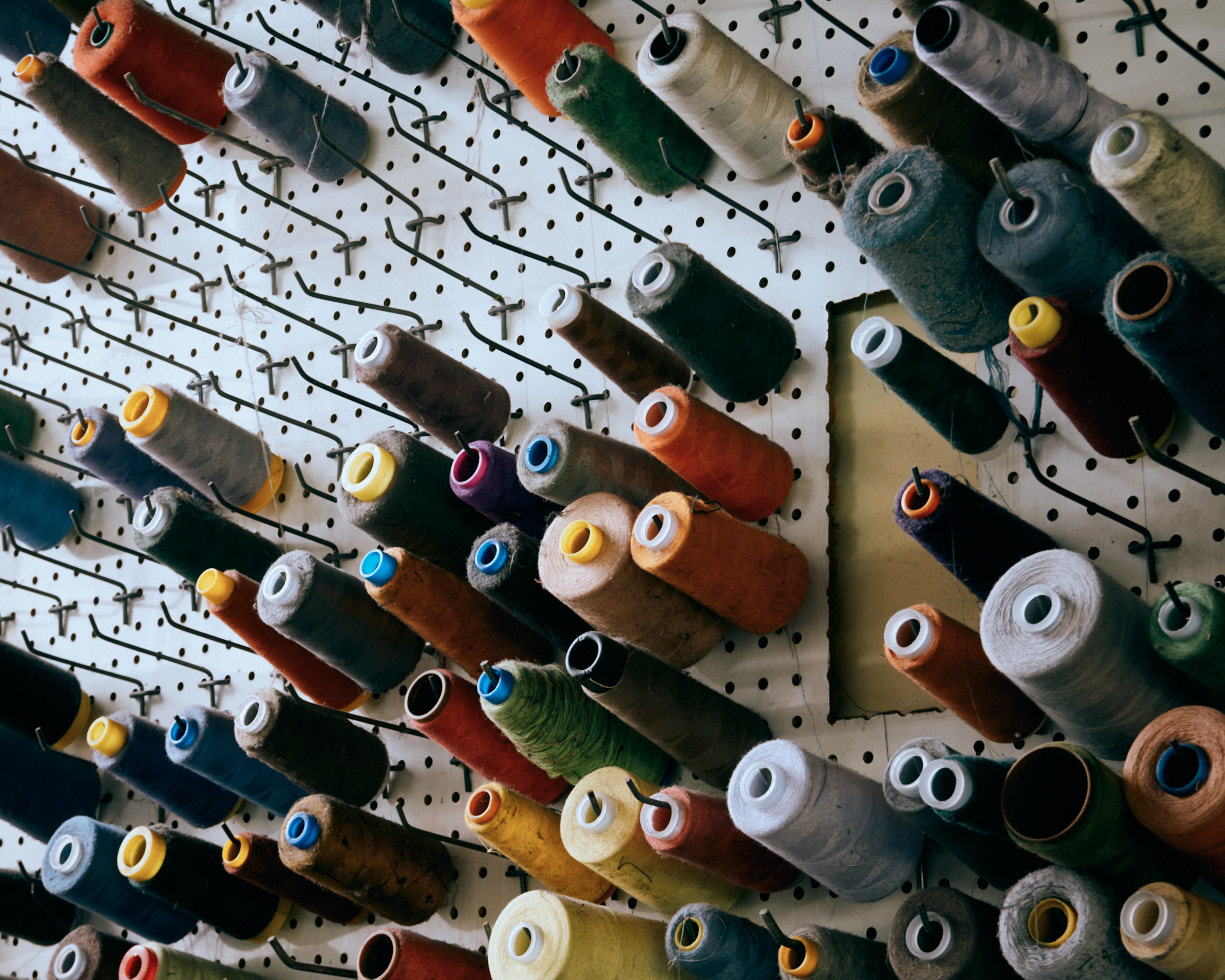





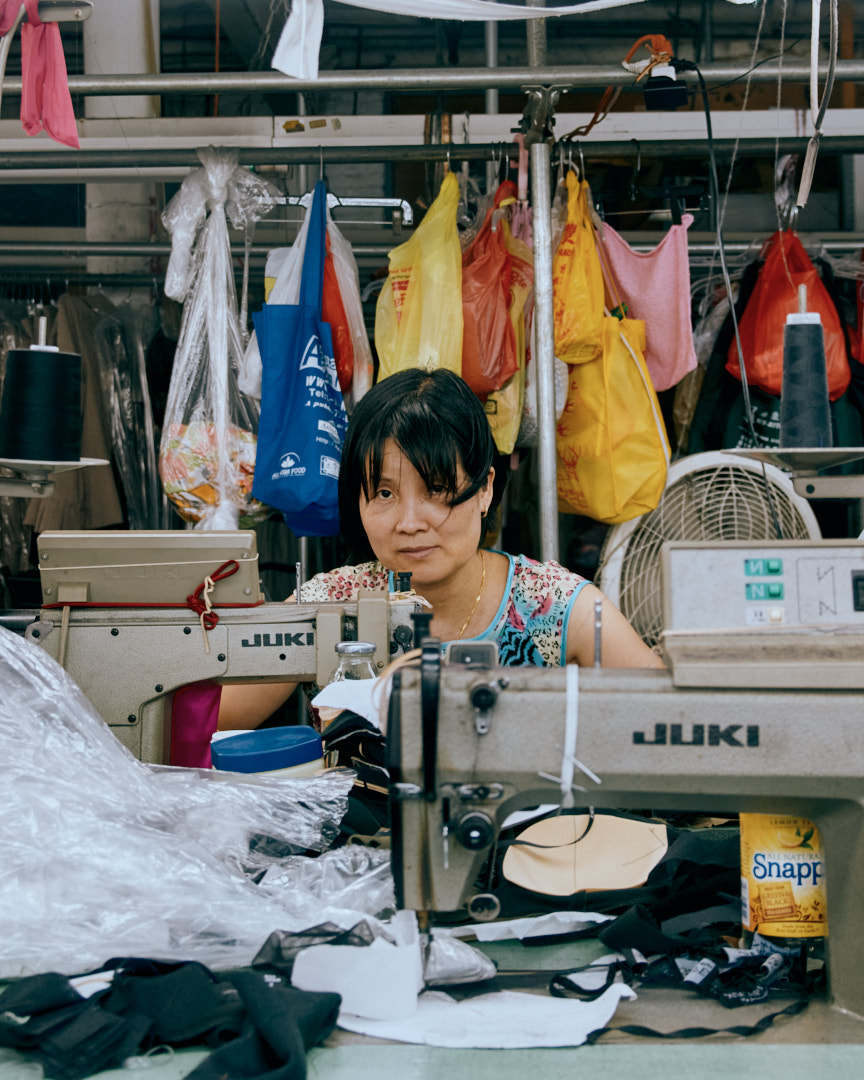
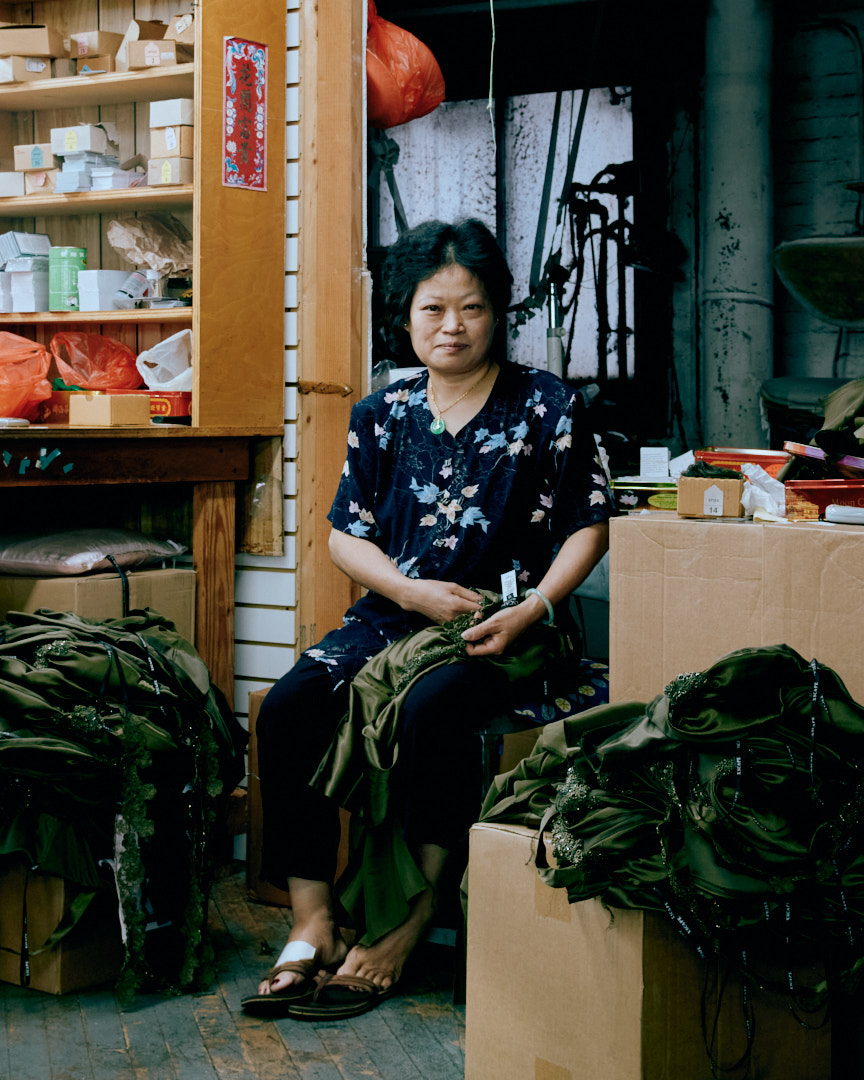



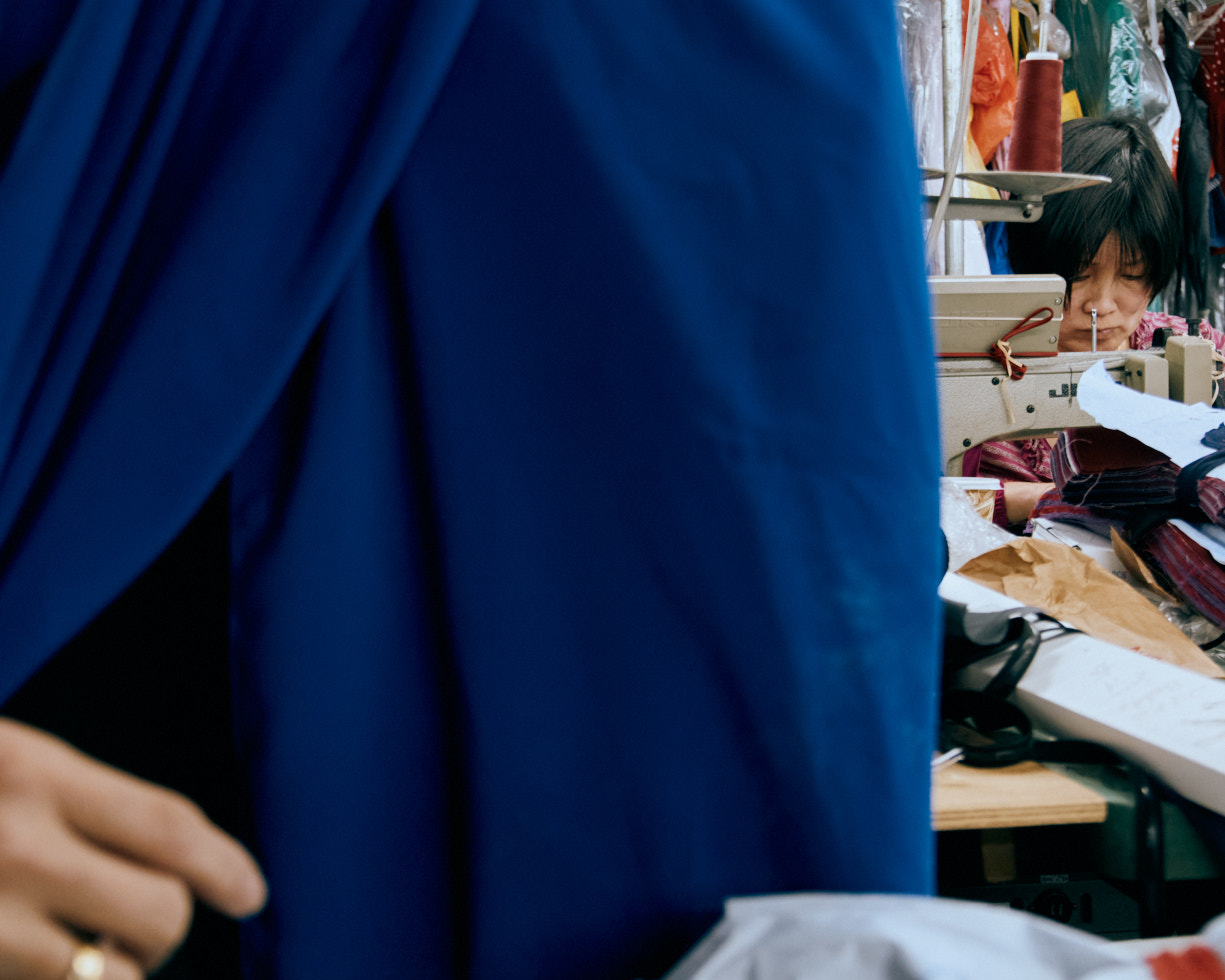
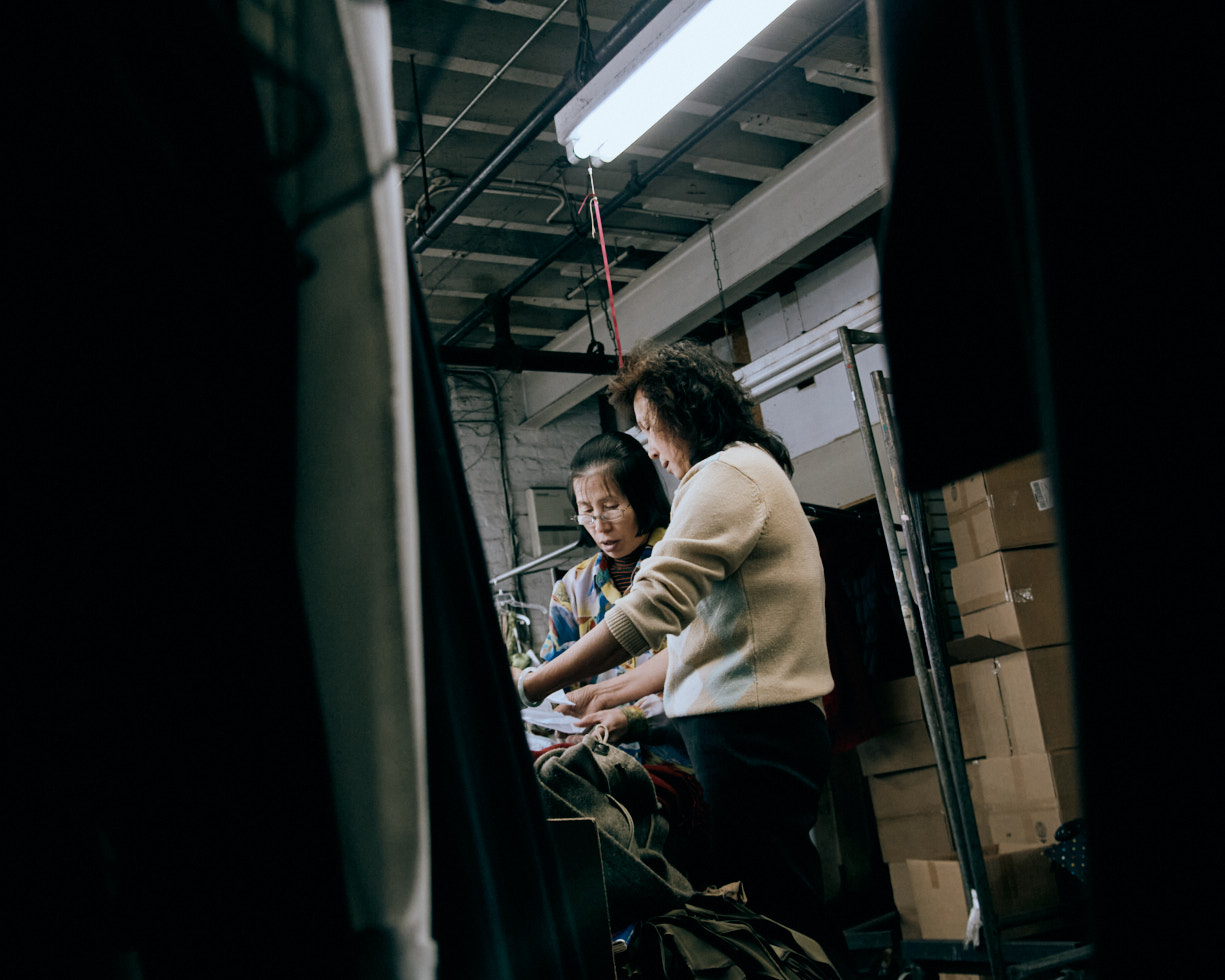
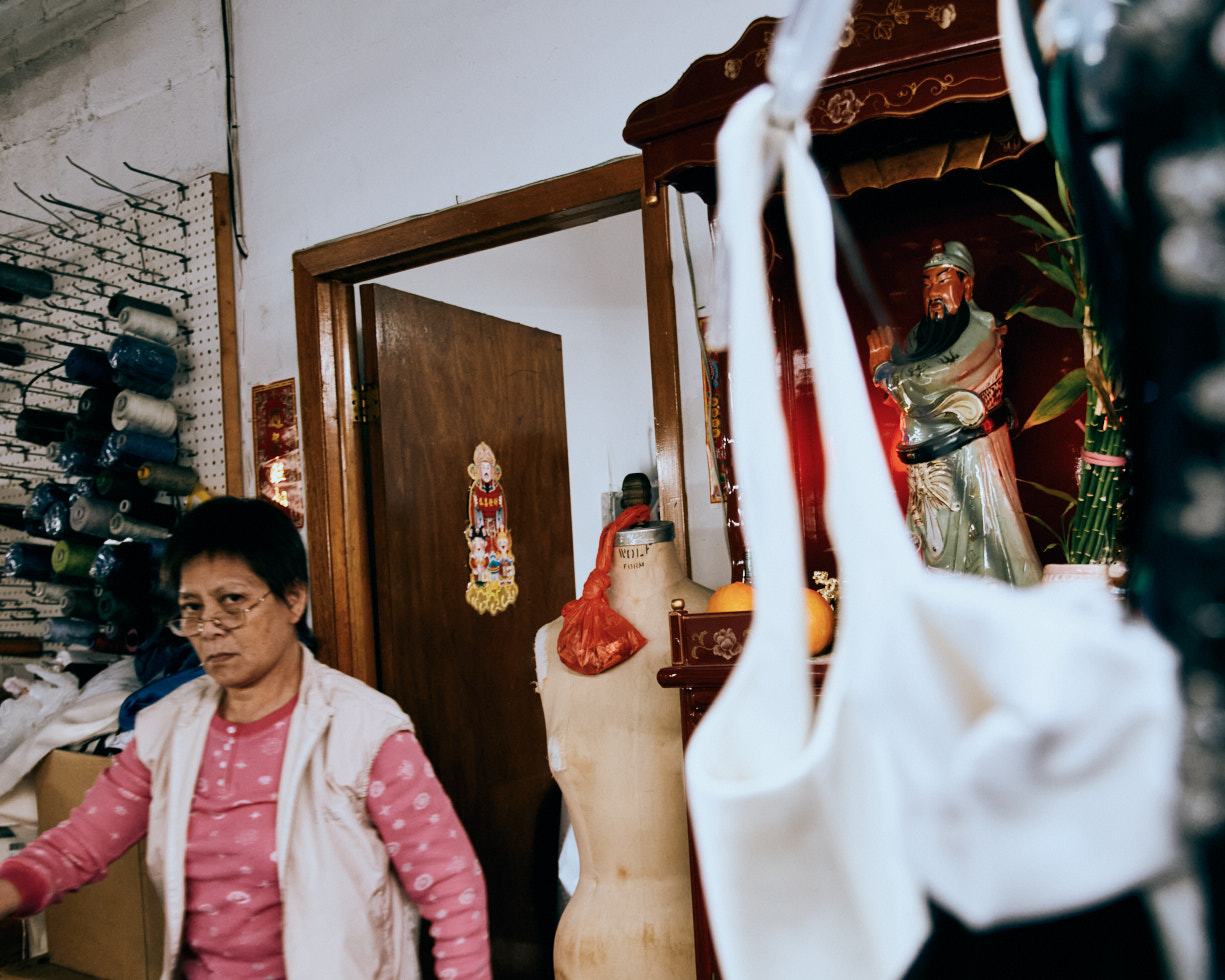

Lucky One
2009
The following photographs are of the interior fourth floor of a seamstress factory located in New York City’s Chinatown. These are photographs of its employees and their work. This factory is called Lucky One.
The environment of a seamstress factory is one I remember well. Each corner like a piece of a puzzle, assembling my childhood in all its glory. Machines fueled by dreams, floorboards etched with memories and pipes and lights woven intricately above. As I trace my footsteps of yesterday, I hear the laughter through the constant songs of the sewing machines. It was my older sister, the children of other workers and myself. We would play hide-and-seek. I always hid under rows of garments with my hands and knees pressed against the wooden floor. Beneath the garments, I’d peek out to see where my sister could be.
It was hard to pick her out through the river of endless feet rushing before me. Feet dressed comfortably in slippers, while their regular shoes remain out of sight. Looking on into the distance, I could see my mother, focused on her fastidious hands. The same dedication was strewn over the faces of the other mothers. They had become perfectionists. And now, years later, not much has changed.
Work here is constant. Every morning, a new mountain of clothing comes off the freight elevator. The seamstresses have their individual tasks from assembling sleeves, to sewing lining or attaching one of the several other articles separated in boxes. They are all working together; seamlessly. As I stand at one end of the massive floor, a familiar feeling comes over me. I watch as life returns to these women. There is no bell, no chime and no gong. There is no indication of anything different. It is lunchtime. An unwritten, unspoken feeling felt inside everyone at the exact same hour. 12:00 noon on the dot.
A big pot of fresh white rice is prepared for everyone. What is eaten with that white rice generally depends on what was left over from dinner the night before. All the different combinations of food and its aromas are mesmerizing. Their conversations fade to silence; an indication that the hour is almost up. Hours were of little importance, but minutes—they were key. Soon they all return to their see yao op1 or, for the lucky ones, see yao guy2. Though they do not realize it, the employees are part of something larger. Their hard work can be seen almost anywhere but will be recognized by none. The seamstresses are paid per article of clothing sewn—an economic necessity built upon the pursuit of dreams and pride that comes with attaining them.
My memories are what lead me back here. I’ve grown both as a person and as a photographer. Experimenting with a variety of tilts and low angle shots has allowed me to relive my childhood in a new perspective, yet although the perspective has altered, the world I grew up in hasn’t. My appreciation for these women and their work remains unchanged.
1See yao op literally translates to soy sauce duck.
2See yao guy translates to soy sauce chicken.
These terms are puns made by the workers to correspond to the type of job they’re given. See yao guy is the “tastier” of the two and is considered the more desirable job, paying 25 cents a garment, whereas see yao op pays 5 cents per garment.
